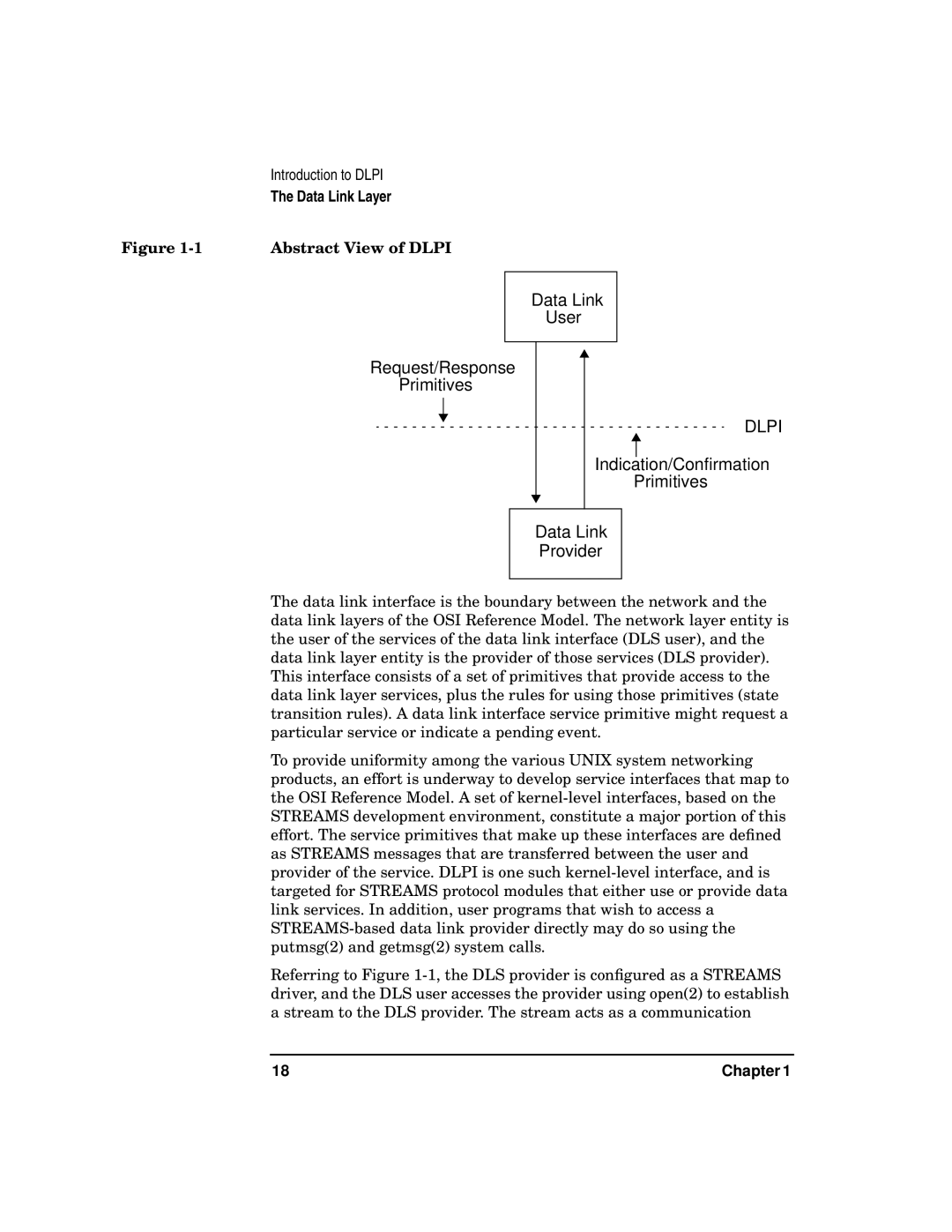
Introduction to DLPI
The Data Link Layer
Figure | Abstract View of DLPI |
Data Link
User
Request/Response
Primitives
DLPI
Indication/Confirmation
Primitives
Data Link
Provider
The data link interface is the boundary between the network and the data link layers of the OSI Reference Model. The network layer entity is the user of the services of the data link interface (DLS user), and the data link layer entity is the provider of those services (DLS provider). This interface consists of a set of primitives that provide access to the data link layer services, plus the rules for using those primitives (state transition rules). A data link interface service primitive might request a particular service or indicate a pending event.
To provide uniformity among the various UNIX system networking products, an effort is underway to develop service interfaces that map to the OSI Reference Model. A set of
Referring to Figure
18 | Chapter 1 |
